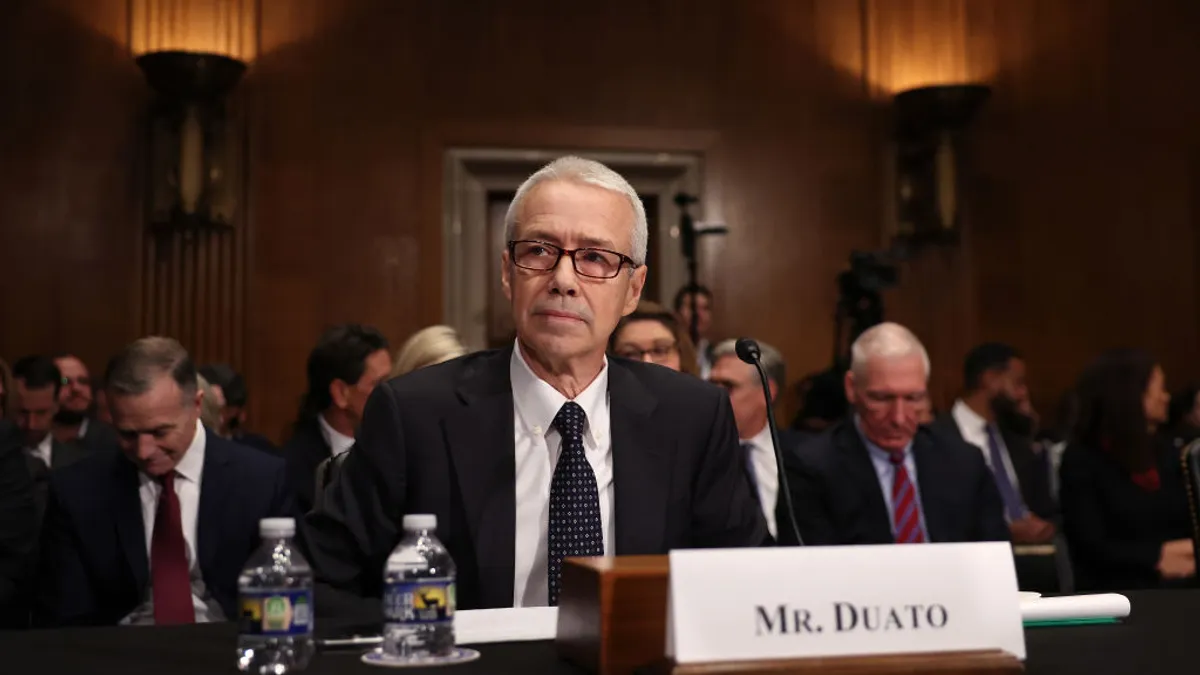The pharmaceutical industry has been employing cross-functional teams to improve processes across business silos for quite sometime, but the ongoing shift in healthcare markets and the increasing complexity of drug commercialization has created an environment where cross-functional alignment has become a more permanent underpinning of marketing protocol.
Experts say it is more important than ever to ensure that input from all stakeholders is represented from the very beginning of the commercial process to the end, so that all participants can guide the process from any misstep that will lose time and money and reduce campaign effectiveness.
 Cross-functional teams have never been easy to develop or integrate for a number of reasons. But the stakes are higher today, and investment in cross-functional communication is crucial, our experts say.
Cross-functional teams have never been easy to develop or integrate for a number of reasons. But the stakes are higher today, and investment in cross-functional communication is crucial, our experts say.
“Where once there were disparate, siloed teams responsible for parts of a whole, today’s patient, healthcare professional, and caregiver media consumption and brand-engagement proclivities demand a new kind of integration and harmony in the teams that create messaging and content to reach those target groups," says Peter Rooney, chief growth officer, Ogilvy CommonHealth Worldwide, a WPP Health & Wellness company.
“If the end goal is a singular, seamless, consistent message across multiple platforms for patients, caregivers, and healthcare professionals, then the team behind that must necessarily be singular, seamless, and consistent."
Rita Ribeiro, senior director, marketing and communications, at Publicis Health Solutions recalls that when she worked as a brand manager almost 10 years ago, the rules for marketing were very defined and the process was extremely methodical. “But now, companies are moving at different rates toward integrating more cross-functional teams," she says. “It is very interesting to see how companies are embracing more cross-functional teams, and how individuals are evolving from traditionally siloed roles into this new way of collaborating."
Susan Duffy, chief strategy officer, at Health Unlimited, says the concept of cross-function in marketing goes beyond the integration of physician and patient messaging and coordinating both global and local implementations. “It involves the customers, borders, and channels, but also the actual functions of marketing, corporate communications, sales, legal, and medical," she says. “All of these functions are involved in the development of a campaign, and as our world becomes increasingly more complex and we have an intersection of owned, earned, and paid media, today everybody needs to be involved."
The first movers in this space are quickly assembling cross-functionally integrated teams to respond to market pressures and to acquire needed expertise, Ms. Ribeiro says. “The industry has come a long way in accepting the need to bring in external expertise," she adds. “When internal expertise isn’t available, bringing in one or two key individuals to provide turnkey solutions has proven to be a great step toward filling these cross-functional gaps."
This practice can provide two immediate advantages: it provides immediate access to a technical skill set not available in house, and it allows for very targeted recruiting of individuals who can thrive in a matrix environment because that person already understands the need to mesh, collaborate, and deliver, she says.
Cross-Functional Drivers
Today, several factors, including the changing dynamics and modes of media consumption and new platforms for creative execution, have made cross-functional teams more of a go-to strategy rather than an exception.
Mr. Rooney says although slow to transform, the pharma industry is now making great strides in breaking down siloed thinking and practices internally so as to create effective, patient-centered work. “Agency teams are motivated to collaborate as never before to deliver integrated marketing communications that align with consumers’ multiplatform media engagement strategies, leading to newfound harmony among talent groups," he says.
There is a major shift in the healthcare market with the emergence of organized providers, and the influence they exert on the system overall has increased the need for cross-functional teams. Another factor is greater diversity in the customers being served due to industry consolidation and vertical integrations.
Ms. Ribeiro cites Cigna’s recent acquisition of Express Scripts or Roche’s purchase of Flatiron Health as examples. “These acquisitions are changing the dynamics in the marketplace and the types of customers being served."
Because of this, teams need to create a value proposition that doesn’t target individuals, such as HCPs or patients, but rather a whole network of vertically integrated customers. This shift of focus requires the multiple-perspective of cross-functional teams.
“Addressing this challenge requires collaboration, not only across internal functions, but also with customer-facing teams, such as outcome research, field-based sales, key account managers, medical science liaisons, health economics and outcomes research, and product access specialists," Ms. Ribeiro says. “These teams are critical to create an integrated, consistent and value-added experience for provider groups and the patients they serve."
The changes in the payer environment have also created the need for new roles in cross-functional teams.
Groups that are working with medical practices need to provide ways to help them navigate the payer environment. Reimbursement specialists and internal customer service reps that work with office managers and patients to navigate the payer environment are now key roles.
“This is one example of an integrated team in today’s world that has one or two of these key individuals in roles that were not prevalent 10 years ago," Ms. Ribeiro says. “This is a permanent change that reflects how companies are adjusting to market changes.
As commercial teams align around the verticals of integrated customers, a key strategy is to thoroughly assess accounts and customer groups and identify key stakeholders and decision makers as well as to understand the value drivers each of them are focused on, she adds.
For example, in an integrated system of hospitals, specialty pharmacy, and skilled nursing facilities, the stakeholders can include medical directors, Pharm.D.s, M.D.s, RNs, and consulting pharmacists. Each of these stakeholders may have a different set of priorities and key performance indicators they manage based on their functions.
 The strategy is to create an integrated plan to match stakeholder needs with the team members able to provide specific expertise, insights, and tools to adequately position products and services at each critical juncture to meet stakeholders’ needs.
The strategy is to create an integrated plan to match stakeholder needs with the team members able to provide specific expertise, insights, and tools to adequately position products and services at each critical juncture to meet stakeholders’ needs.
“A robust metrics platform to evaluate impact and guide future adjustments is the last critical component for solidifying an effective, collaborative cross-functional team," Ms. Ribeiro says. “Metrics will help identify key roles and activities that drive success. Analysis will show, for example, if placing a clinical nurse educator, reimbursement specialist, or a MSL team at a key account had a positive impact on product utilization. It is important to quantify and celebrate success as a way of fostering continued cross-functional collaboration and supporting innovation in this ever-changing environment."
The availability of new technology, such as voice response systems such as Alexa, are creating the need for bringing new members to a cross-functional team. “There are technologies and tools that are available to the marketing and communications space that our clients often have no precedence in using," Ms. Duffy says. “If it’s the first time a brand is going to have messaging on Alexa about medication reminders, the cross-functional team must be able to adequately assess the risk and evaluate the benefits to both the company and patients."
Best Practices
For cross-functional teams to be successful, they need to exist within a culture of openness, based on trust and reciprocity, Ms. Ribeiro says. Companies need to operate a supportive and sustainable culture that recognizes a changing marketplace and that supports its teams toward embracing collaboration.
“This attitude starts at the top and it’s a culture that recognizes that things are changing and there is a need for adjustment, and fosters an environment where people feel safe sharing their knowledge," she says.
To this end, blending technology and human elements together is key, including leveraging CRM assets to assist with communication and building integrated account plans. However, technology should not replace face-to-face meetings or live conference calls where the strategies are formed and refined based on two-way discussions that build up to a solid plan. “In truly collaborative organizations, success is achieved by being agile, dropping titles and functional boundaries and focusing on the task at hand," Ms. Ribeiro adds.
Two stakeholders that should never be overlooked are legal and regulatory, Ms. Duffy says. Although marketers know that all material must be approved through these gatekeepers, often they are not invited to the table until after the campaign has been developed, which is too late in the game.
“Legal and regulatory partners need to be enrolled early on in the process to help champion the work," she says. “If they are not involved in the beginning, marketing plans may be foiled at the very end, and this is a tragedy when that happens."
There has been an acknowledgement that the best, most successful cross-platform client work is the result of cross-functional collaboration within and among agencies, Mr. Rooney says. This approach requires breaking down silos, an allegiance to client brand and business goals as the biggest driver of output, and a belief that qualities of agility and speed are table stakes for growth.
“Access to a greater amount of more detailed and sophisticated data has served as a powerful key to better understanding patients’, caregivers’, and healthcare professionals’ mindsets and behaviors," he says. “In fact, data have become the lynchpin of harmony within cross-functional teams."
In particular, cross-functional integration is even more important for smaller companies or single-product companies. For example, how the scientific platform is defined for a small company that’s launching its first drug, perhaps even a breakthrough first-in-class drug, is extremely critical to the overall corporate narrative of the company.
“The corporate narrative is also significant to the marketing and promotion of that product," Ms. Duffy says. “If we don’t coordinate with all the functions involved in that company, their product, and the larger community, our communications will be inconsistent, which will lead to confusion among the different stakeholders."
Bringing everyone to the table in a cross-functional team can create quite a big group, and it may appear to slow the decision-making process down, but there are ways to avoid this road bump as well. The first most important step is to identify who the key decision makers are as early on as possible.
To avoid lack of clarity when many different functions come together under one team, Ms. Ribeiro encourages identifying the leader and outlining each team member’s role and his or her expected contribution to the team.
Early-stage collaboration within a cross-functional team does take time, but in the end if someone is left out, there is a risk of derailment down the line. “It’s better to invest the time and the effort up front to set up the cross-functional team," Ms. Duffy says.(PV)
~~~~~~~~~~~~~~~~~~~~~~~~~
Three Keys to Cross-Functional Success
According to Strategy&, the strategy consulting business of PwC, cross-functional teams need three key guardrails in place in order to perform well:
Senior executive ownership. Assigning a senior executive to oversee the team and its output signals that the effort is important to the organization. It also provides the mechanisms for clear decision-making and ensures that team members are credited for this work.
Clear goals and performance metrics. Tying the team’s output to the organization’s strategy and to the executive owner’s performance aligns the team to solve the right problem.
Knowledge transfer process. Create mechanisms to ensure that the team’s output is transferred back into key functions and work streams so the insights become standard operating procedures for the enterprise.


















